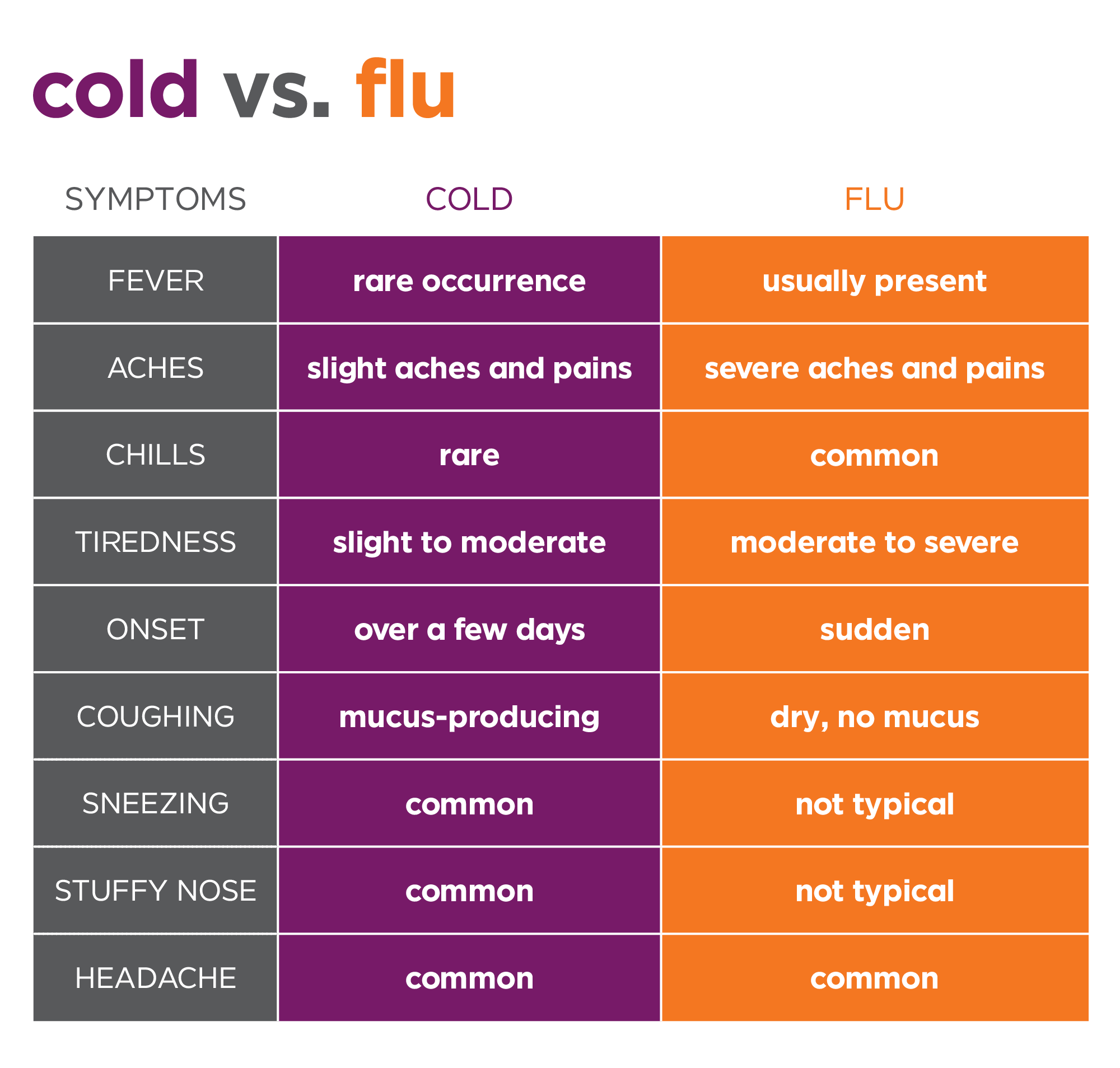What is the Common Cold?
The common cold is true to its name: In the United States, there are billions of cases of the cold every year.1 It’s the primary reason kids stay home from school and adults miss work.
According to the American Academy of Pediatrics, the average child has about 8 to ten colds in the first several years of her life.
The common cold can be caused by more than 200 different viruses, which easily spread through close contact and in the air from coughs and sneezes. According to the CDC, rhinovirus is the most common type of virus that causes colds.
For most people, this viral illness only causes minor discomfort and just a little bit of down time, since most colds clear up within 7 to ten days. However, colds can sometimes lead to other illnesses, called “secondary infections.” The most common of these are bronchitis, pneumonia, sinus infection, and ear infection. Small children are especially prone to ear infections after having a cold.
Cold Symptoms
Most people recognize signs of a cold. Most colds will typically begin with a sore throat and runny nose. And, in general, cold symptoms tend to happen in stages – at the beginning, middle, and end of your cold.
Beginning/Early Stage – 1 to 3 Days
Some early warning signs to slow down and rest include:
- Sore or scratchy throat
- Tiredness / fatigue
- Runny or stuffy nose
- Mild achiness
Middle Stage – 4 to 7 Days
This is usually the peak of your cold and you’ll likely experience:
- Sneezing
- Congestion or running nose
- Coughing
- A mild fever in children (101° F - 102° F)
- Mild achiness
- Tiredness / fatigue
End Stage – 8 to 10 Days
Most colds will wind down with a few remaining symptoms:
- Cough
- Congestion
- Runny or stuffy nose
- Tiredness / fatigue
If your cold lasts longer than ten days or your symptoms have worsened by the end stage of your cold, see your primary care provider or visit your nearest MedExpress. This might be a sign that you have developed a secondary infection that may require treatment with prescription medication.

Diagnosing a Cold
Colds are generally diagnosed by observing symptoms. Tests to identify the virus are not necessary.
Treating a Cold
Because colds are viral illnesses, they cannot be treated with antibiotics. There are a number of things, though, that can help relieve symptoms:
- Get plenty of rest and drink lots of fluids.
- Use saline spray or a nasal rinse.
- For a sore throat, gargle warm salt water.
- Use a cool mist vaporizer / humidifier.
- Take ibuprofen or acetaminophen to help ease aches and reduce fever.
Before starting a new medication, consult your healthcare provider to determine if taking these medications are appropriate for you.
Preventing a Cold
Because colds are so common, it’s nearly impossible to prevent contracting a cold some time in your life. But there are some steps you can take to protect yourself during the peak of cold and flu season:
- Avoid touching your face, nose, mouth, and eyes – places where germs can enter your body.
- Avoid contact with people who are sick.
- Wash your hands as often as you can, especially if you touch shared surfaces (e.g. door handles) in high-traffic areas.
And, finally, if you or your children are sick with a cold, there are measures you can take to help prevent the spread of illness:
- Stay home from work or keep your child out of school during the peak of the cold.
- Sneeze or cough into a tissue and throw it away immediately afterwards. Wash your hands after you’ve tossed your tissue.
- Sneeze or cough into the crook of your elbow if you don’t have a tissue handy.
- Wash your hands often or use an alcohol-based hand sanitizer.
Differences Between a Cold and the Flu
Colds and the flu are both viral illness, and sometimes it can be hard to tell them apart. With our helpful chart below, you can learn about cold and flu symptoms and how the symptoms may show up differently for a cold or the flu.

Looking for an alternative version of the above infographic?
Differences Between a Cold and COVID-19
The common cold and COVID-19 share many symptoms, which can be confusing. To set your mind at ease and get you back to feeling better, MedExpress offers COVID-19 evaluations, testing and treatment.
After an evaluation by one of our medical professionals, you may receive a COVID-19 test. Once we receive your results, we’ll be better able to discern if your treatment plan is one for the common cold or COVID-19.
MedExpress provides Paxlovid* to adults with mild to moderate COVID-19 who are at increased risk of progression to severe disease.
References:
1 National Institutes of Health: Understanding a Common Cold Virus | National Institutes of Health (NIH). Published: April 13, 2009. Accessed: September 13, 2023.
*A MedExpress provider will evaluate you and provide appropriate treatment if possible. If additional care is needed, you may be referred to a specialist. If the provider determines that medications are needed, a prescription will be sent to your pharmacy of choice on your behalf. We recommend treatment with COVID-19-specific therapy such as Paxlovid for certain symptomatic adult patients who have mild to moderate COVID-19 and are at increased risk for progression to severe disease (e.g., based on older age, immune status, COVID-19 vaccination history, and comorbidities associated with progression such as obesity, chronic lung disease, heart disease, age over 65 and certain disabilities) as well as all immunocompromised adults and adults with multiple risk factors for progression to severe disease. Treatment should be initiated as soon as possible after diagnosis of COVID-19 and within 5 days of symptom onset. Paxlovid is only available with a prescription.
